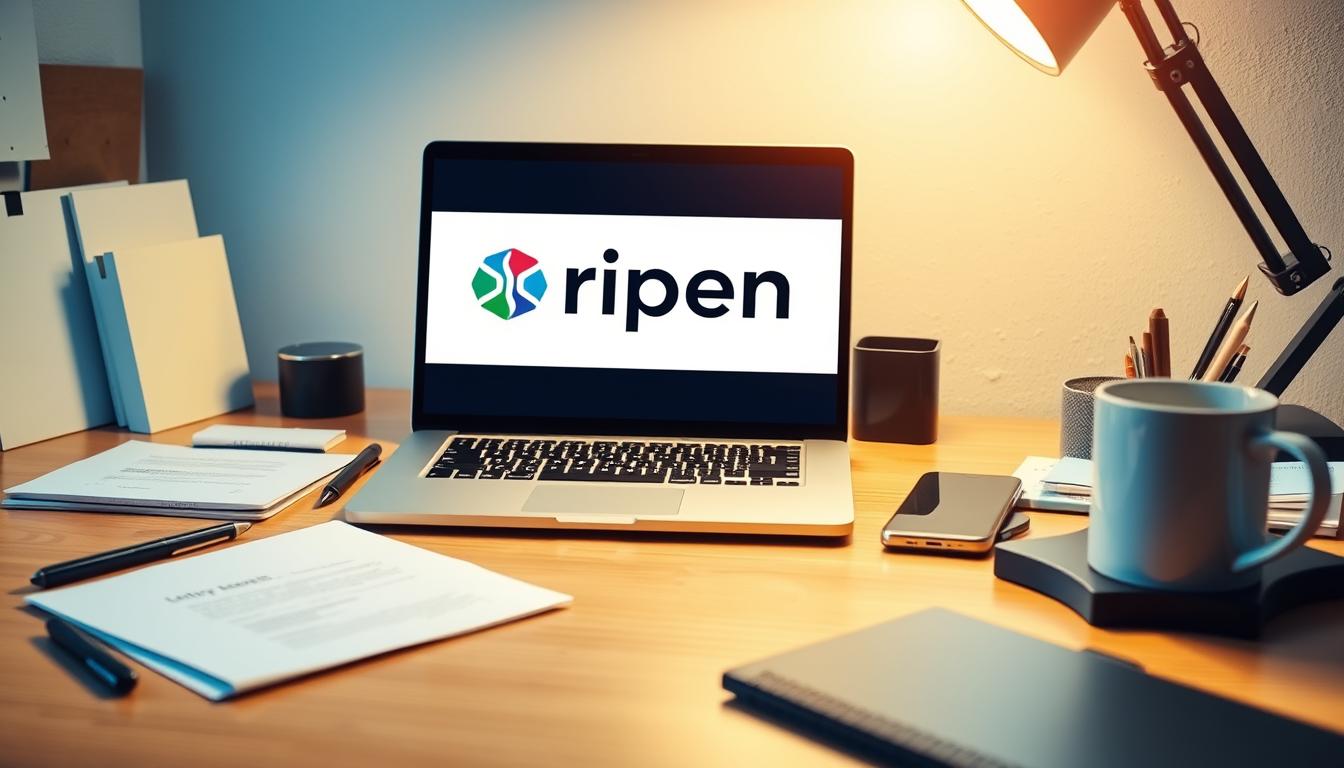What if everything you know about job interviews is wrong? For a company reshaping how students gain real-world experience, Riipen’s approach to hiring might surprise you. Unlike traditional corporate processes, they prioritize your ability to solve problems through hands-on learning – the same philosophy that’s connected over 164,000 learners with 44,000+ companies since 2013.
This guide reveals how to master their unique evaluation style, which focuses on project-based scenarios rather than generic experiential learning opportunities. You’ll learn why 82% of candidates miss alignment with Riipen’s core values during screenings – and how tools like RoboApply’s interview coach help you avoid common pitfalls. Their AI-powered platform even lets you apply to thousands of tailored jobs with one click while optimizing resumes for applicant tracking systems.
Key Takeaways
- Riipen evaluates candidates through project-based scenarios reflecting real workplace challenges
- The company’s mission to reduce graduate underemployment directly shapes interview priorities
- Six core values drive 90% of behavioral questions during screenings
- Automated tools can streamline preparation while maintaining authentic self-presentation
- Successful candidates demonstrate measurable impact on student success outcomes
- Scale of operations (700+ institutions) creates specific collaboration skill requirements
Preparing for Your Riipen Interview
Standing out in today’s hiring landscape requires more than polished answers – it demands strategic alignment with how organizations evaluate talent. For roles connecting education and industry, your preparation must mirror the company’s operational DNA.
Researching the Company and Role
Start by dissecting programs like Level UP and FuturePath – initiatives where students complete 60-hour projects for real employers. These short-term collaborations reveal how the platform bridges academia and businesses. Focus on how your target role (student support, employer relations, or tech development) directly impacts these outcomes.
Tools like RoboApply’s research features streamline gathering information about funding partnerships and expansion goals. For example, knowing about the Government of Canada’s I-WIL initiative shows you understand their growth priorities.
Understanding Key Competencies
Employers across sectors value candidates who grasp modern education challenges. Prepare stories demonstrating your ability to:
- Manage multiple stakeholders (students, faculty, corporate partners)
- Translate academic goals into practical project designs
- Measure success through graduate employment metrics
If applying for technical roles, highlight experience building platforms that scale across 700+ institutions. For client-facing positions, showcase how you’ve aligned diverse companies with shared objectives. Automated preparation tools help identify these patterns in your existing experience.
Riipen Interview Questions: What to Expect
Understanding a company’s unique evaluation style can transform your preparation strategy. Expect scenarios that mirror real-world challenges rather than generic inquiries. This approach reflects their mission to bridge classroom learning with measurable career outcomes.

Common Questions and How to Answer Them
Behavioral questions often focus on your commitment to student growth. For example: “Describe a time you helped someone translate academic knowledge into workplace skills.” Highlight initiatives like mentoring programs or curriculum redesigns that improved job placement rates.
Stakeholder management scenarios test your ability to align diverse groups. Prepare a story about coordinating between faculty and employers to meet project deadlines. Quantify results: “Streamlined communication reduced feedback delays by 40% across 15 partner organizations.”
Situational questions might address conflicts in project-based settings. Use the STAR method to explain how you resolved mismatched expectations between learners and companies. Tools like RoboApply’s interview coach help refine these narratives through AI-powered feedback.
Scalability discussions require concrete examples. Mention strategies you’ve used to maintain quality while expanding programs. If you lack direct experience, outline steps you’d take based on proven internship frameworks.
Demonstrate cultural adaptability by sharing how you’ve supported non-traditional learners. A case study: “Developed flexible timelines for working parents in a upskilling program, achieving 92% completion rates.” This shows your grasp of diverse student needs in modern education models.
Crafting a Standout Resume and Cover Letter with RoboApply
Your application materials are your first chance to demonstrate how you solve real-world challenges in education-to-career transitions. RoboApply’s tools help bridge the gap between your qualifications and what hiring teams prioritize.
Build with Precision, Not Templates
Start with RoboApply’s AI resume builder. It analyzes job descriptions from experiential learning platforms to highlight your most relevant skills. Example: If applying for roles involving student partnerships, the tool emphasizes metrics like “Coordinated 18 industry projects improving graduate hire rates by 35%.”
The cover letter builder creates narratives showing your grasp of modern education gaps. Input key achievements, and it generates content like: “Redesigned curriculum modules increased student completion rates by 42% across diverse socioeconomic groups.”
Survive the Digital Gatekeepers
Over 75% of applications never reach human eyes. RoboApply’s ATS optimizer formats your resume using proven job search strategies, ensuring keywords like “stakeholder collaboration” match employer systems. It restructures sections to emphasize measurable outcomes over duties.
Use the grammar checker to eliminate errors that undermine professionalism. Combine this with skills mapping: Show how your background in academic support translates to managing 700+ institutional partnerships. Quantify achievements using percentages and timeframes recruiters value.
Make sure your final documents answer three questions every employer asks: Can you solve our specific problems? Do you understand our position’s unique demands? Will you amplify student opportunities? Tools like targeted internship guides provide benchmarks for impactful phrasing.
Mastering the Interview Process with Innovative Tools
Modern hiring demands blend preparation with smart technology. Tools designed for experiential learning platforms help you showcase skills employers actually test during evaluations. This approach turns generic answers into evidence-backed narratives that align with organizational goals.

Preparing Through Interview Coaching and Role-Play
Practice resolving real-world conflicts before they happen. RoboApply’s interview coach simulates scenarios like balancing student expectations with employer timelines. One user reported: “Role-playing stakeholder negotiations helped me articulate solutions 3x faster during actual screenings.”
Focus on competency-based questions about managing remote teams or improving program outcomes. Use metrics from past projects – for example, “Increased participant retention by 28% through weekly progress check-ins.”
Leveraging RoboApply's Auto-Apply and Job Tracker
Streamline applications without sacrificing quality. The auto-apply Chrome extension lets you submit tailored resumes to multiple employers in minutes. One click adds positions matching your skills, while AI ensures each application meets specific job requirements.
Track progress across 50+ applications with the job tracker. Set reminders to follow up strategically – a skill valued in education roles.
“Seeing all my opportunities in one dashboard reduced prep time by 12 hours weekly,”
notes a recent EdTech hire.
Reference success stories like Level UP’s 64% employment rate to show you understand measurable outcomes. Align your answers with employer priorities using data from Riipen’s Wall of Love testimonials. This demonstrates your grasp of long-term career impacts beyond any single job offer.
Supplementary Strategies for a Successful Job Hunt
Expanding your approach beyond applications creates opportunities most candidates miss. Strategic networking turns passive job seeking into active career development – especially when targeting organizations focused on education innovation.
Building Bridges Through Targeted Connections
- Automate relationship-building: RoboApply’s outreach CRM helps track conversations with program alumni and partner institutions. Set reminders to check in quarterly with contacts from FuturePath’s 2025 cohorts (June/August/October). This shows sustained interest in their 60-hour project model.
- Demonstrate platform knowledge: Mention FuturePath’s $1,400.40 student compensation during discussions. This detail proves you understand how government-funded initiatives create real-world learning opportunities.
- Leverage dual perspectives: Interview students who completed 2-8 week projects. Ask how they balanced academic requirements with employer expectations. Use these insights to discuss solutions during interviews.
- Map your value: Identify 3-5 companies in Riipen’s partner network where your skills solve specific challenges. Example: “My background in curriculum design could help TechCorp improve project onboarding for learners.”
Attend virtual events showcasing student success stories. These often reveal unspoken priorities – like helping employers find candidates who align career development with workforce needs. Tools like automated job search strategies help maintain this balance while managing multiple applications.
Position yourself as a bridge builder. Share examples of how you’ve helped students translate classroom knowledge into workplace results. This demonstrates your grasp of modern education’s dual mission: empowering learners while delivering value to companies.
Conclusion
Your career growth hinges on strategic alignment between your skills and evolving workplace demands. Tools like AI-powered leadership scenarios help bridge gaps between academic knowledge and employer expectations, ensuring you demonstrate measurable impact.
Focus on outcomes that mirror real-world challenges. For example, highlight how you’ve streamlined processes for teams managing hands-on projects across multiple stakeholders. Quantify results using percentages or timeframes to show concrete value.
Leverage automation to maintain authenticity while scaling efforts. Platforms that optimize applications and track progress let you focus on refining narratives about student success and collaborative problem-solving.
Every opportunity becomes a stepping stone when you frame experiences through the lens of long-term career development. Stay curious about emerging education models, and let data-driven insights guide your next move toward professional growth.
FAQ
How do I demonstrate my qualifications for project-based roles?
Highlight hands-on experiences where you solved real-world challenges. Use specific metrics or outcomes from past collaborations, internships, or academic projects. Emphasize skills like cross-functional teamwork, adaptability, and how your contributions aligned with broader organizational goals.
What steps ensure my application aligns with employer expectations?
Research the company’s recent projects and industry trends. Tailor your resume and cover letter using keywords from the job description. Tools like RoboApply’s AI builder can help match your qualifications to the role while maintaining authenticity in your narrative.
How can I address gaps in technical experience during the process?
Focus on transferable skills like critical thinking, stakeholder communication, or leadership. Share examples of how you quickly learned new tools or adapted to unfamiliar tasks in past roles. Employers value curiosity and problem-solving agility as much as technical expertise.
Why is networking emphasized for roles on platforms like FuturePath?
Building relationships with industry professionals helps you uncover unadvertised opportunities and gain insights into company cultures. Engage in virtual career fairs, LinkedIn outreach, or alumni networks to showcase your initiative and learn about team dynamics before applying.
What’s the best way to prepare for behavioral assessments?
Use role-play simulations to practice scenarios like conflict resolution or deadline management. Structure responses using the STAR method (Situation, Task, Action, Result) to clearly articulate your impact. Tools like interview coaching modules can provide targeted feedback on delivery and content.
How does project work through cohorts enhance my candidacy?
Collaborative projects demonstrate your ability to contribute to team-driven goals and navigate diverse perspectives. Discuss specific challenges you overcame, how you incorporated feedback, and the tangible deliverables your group produced. This shows employers you thrive in real-world, iterative environments.


















